ASO School
You can learn about ASO, App marketing, app store optimization and app promotional strategies here and gain the latest app market news and analysis. Helping you to carry out app store optimization and promote app data growth.
10 Often Overlooked Details That Can Significantly Improve ASO Effectiveness
2025-03-17
10 Often Overlooked Details That Can Significantly Improve ASO Effectiveness
In the field of App Store Optimization (ASO), most developers focus their efforts on popular keyword layouts and visual design. However, according to official reports from Apple's App Store and Google Play, those often overlooked details can actually lead to more than a 30% increase in natural downloads. This article will systematically analyze 10 high-value ASO strategies, combining algorithm whitepapers and industry best practices to help developers break through optimization bottlenecks.
I. Constructing a Keyword Variant Matrix: Mining Long-Tail Traffic
Mainstream app store semantic analysis algorithms have achieved an 82% synonym recognition rate, but developers on average only cover 35% of the variant forms of core words, resulting in significant loss of precise traffic.
Implementation Strategy
-
Three-Dimensional Variant Model
-
Functional Dimension: Extend keywords by overlaying technical features. For example, upgrade "AI Translation" to "Offline AI Translation" or "Multimodal AI Translation," more accurately meeting users' search needs for different translation functions.
-
Scenario Dimension: Extend keywords by combining user behavior scenarios. For example, derive "Office Fragmented Fitness" or "Postpartum Recovery Courses" from "Fitness Courses," better reaching target users in specific scenarios.
-
Regional Dimension: Fully adapted to local language habits. In Southeast Asia, "Taxi Service" might need to be adjusted to "Motorcycle Taxi Booking" to better match local users' language search preferences.
-
-
Data Validation Use professional ASO tools (such as UPUP) to generate over 200 candidate words. Then, filter out long-tail words with a search index greater than 4605, while excluding high-difficulty keywords with popularity greater than 70, ensuring that the selected keywords have both search heat and operability.
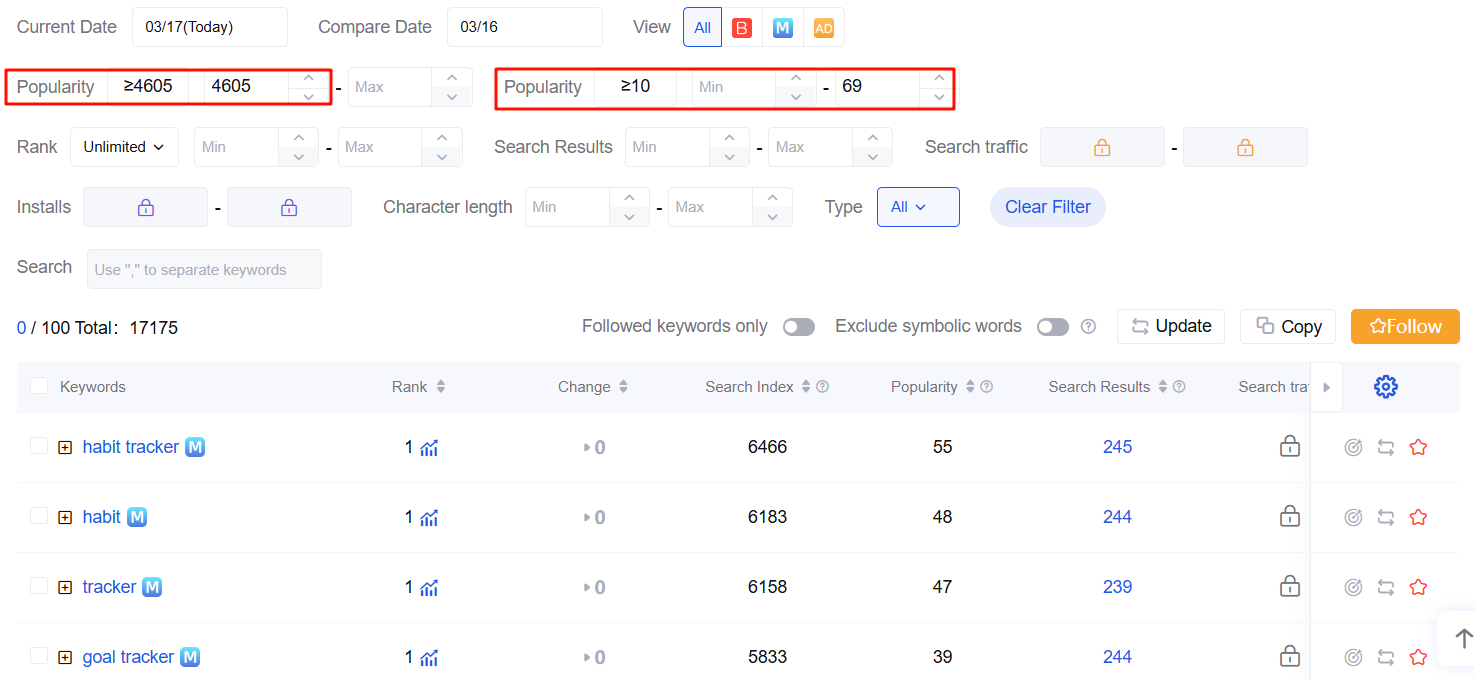
Source:UPUP
II. Platform-Specific Keyword Layout
App Store Optimization Guidelines
-
Title Optimization: Apple limits titles to 50 characters, suggesting that core keywords (like "Smart Translation") be placed in the first 10 characters to enhance search matching, allowing the app to be displayed more prominently when users search for related terms.
-
Keyword Field: The independent 100-character keyword field in the developer backend is recommended to use 8-12 high-weight words, employing TF-IDF algorithms for keyword density optimization. Avoid keyword stacking to prevent search ranking penalties.
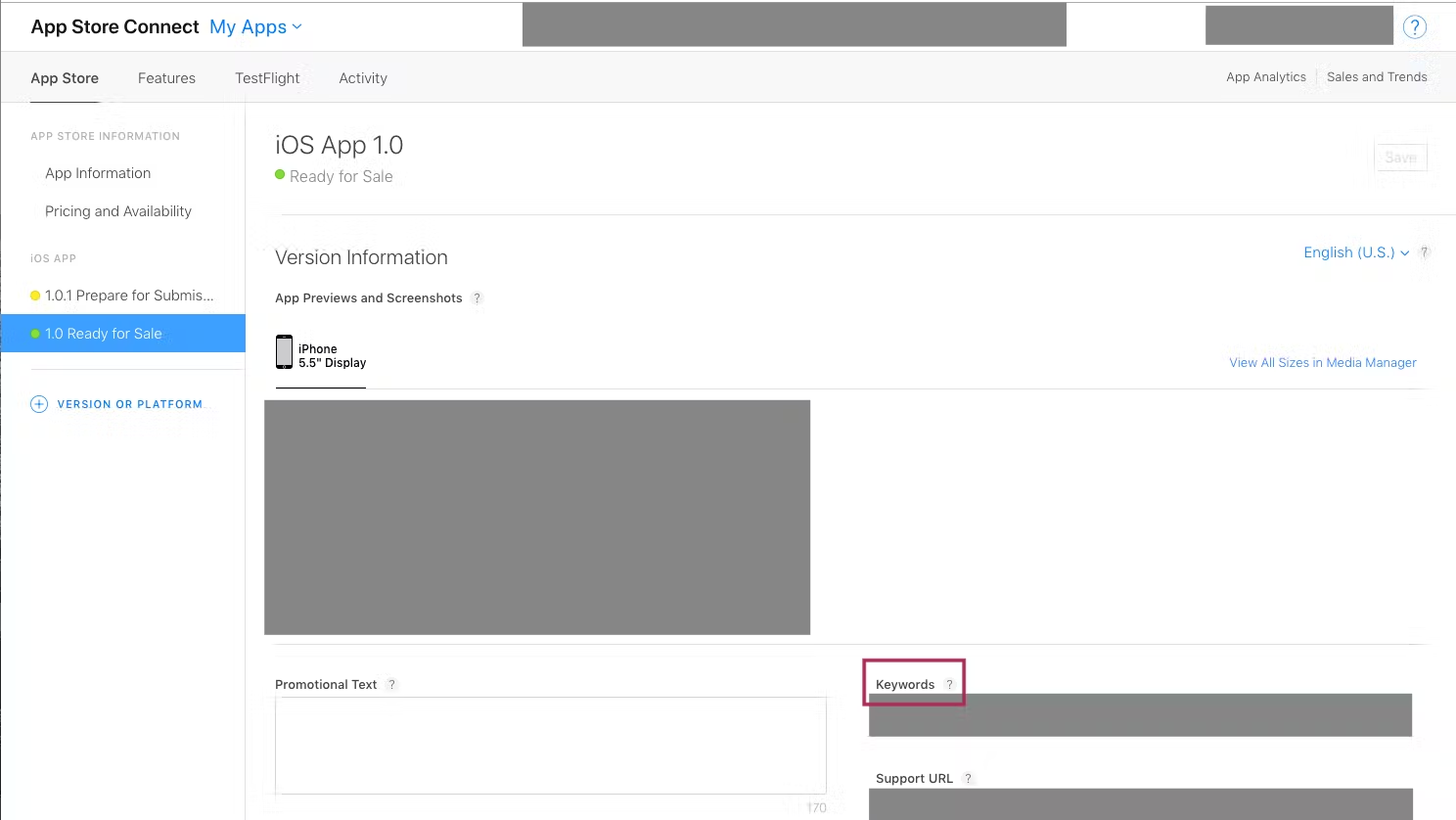
Source:App Store
Google Play Optimization Logic
Android platforms do not have an independent keyword field, requiring coverage through titles and descriptions. Suggest deploying 3-5 core keywords in the first 200 characters of the description, using a "function word + scenario word" combination structure. For example, "Offline Translation Documents | Multilingual Meeting Real-Time Transcription," which helps increase keyword relevance and search exposure.
III. Technical Optimization of Video Localization
Google Play official data shows that adapting videos to local languages can increase conversion rates in emerging markets by 47%, but 83% of developers have not performed deep optimization.
Technical Implementation Path
-
Multilingual Engineering Specifications: Use UTF-8 encoding to ensure compatibility with special characters, accurately displaying German umlauts or Thai characters. For Arabic versions, design separate numeric and text subtitles.
-
Algorithm-Friendly Subtitle Design: Embed core keywords at a frequency of 3-5 times in subtitles to enhance video relevance in search algorithms. Use a "verb + quantifier" structure for clearer information transmission. Ensure subtitles cover more than 60% of the video duration, with a font contrast ratio of 4.5:1 or higher for readability.
IV. Peak Design for Review Trigger Mechanisms
Stanford University's UX Lab research shows that users' dopamine levels peak after completing three core operations (e.g., completing a training course in a fitness app), increasing conversion rates by 237% when review requests are triggered at this time.
You should find the moment when your app is least intrusive. If you prompt users while they are running the app, you will always disrupt their workflow, but you can try to find the moment when users feel the least disturbance.This example from Clear illustrates this point very well: you should find a moment in your app when it is least intrusive.
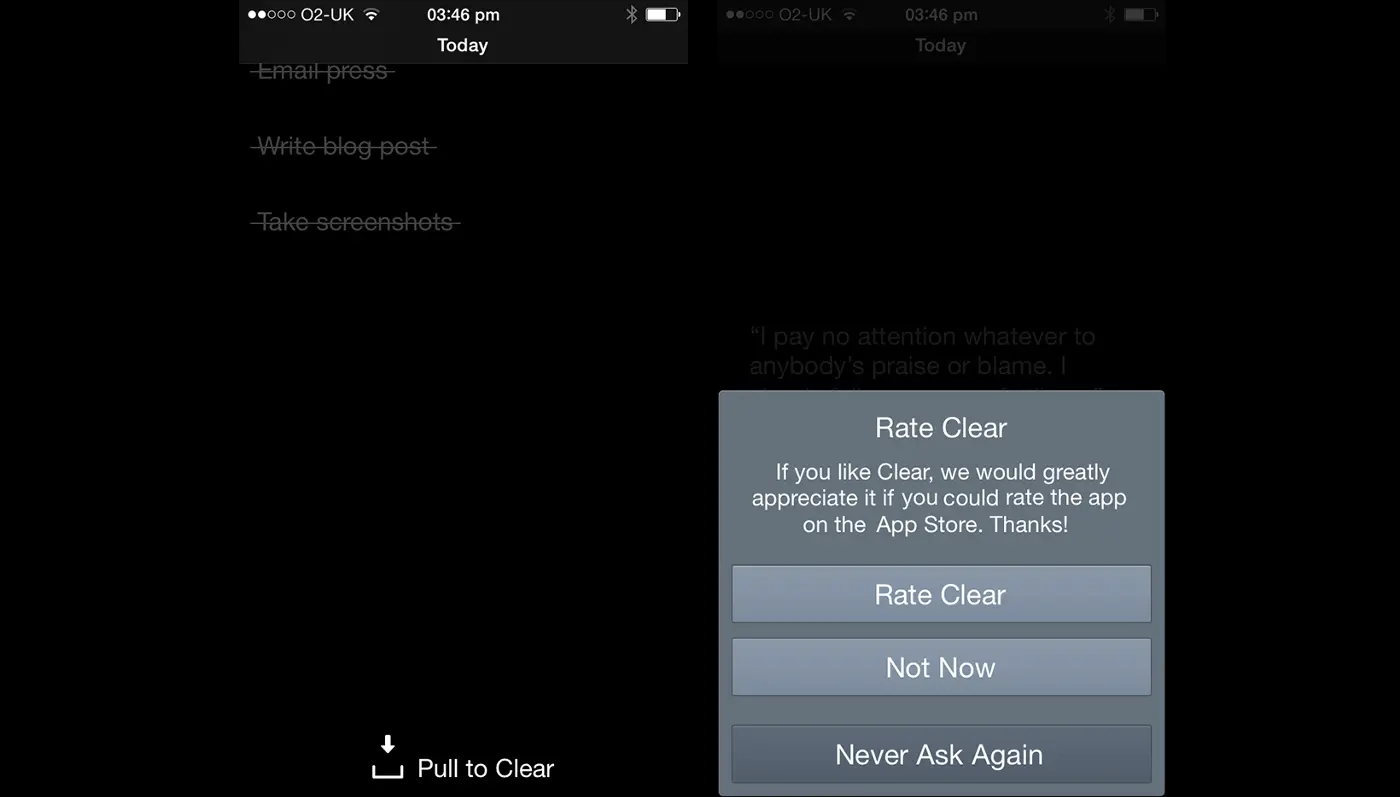
Source:Clear
Optimize the text structure: Use phrases like "Congratulations on completing your 5th training! You have surpassed 92% of users. Click to share your experience and help more people progress." This cleverly embeds social recognition and achievement factors, effectively guiding users to review.
V. Algorithmic Weight Analysis of Punctuation
Search Engine Processing Logic
-
Comma (,): In the App Store, commas act as keyword separators, increasing the weight of individual terms and helping algorithms more accurately identify keywords.
-
Vertical Line (|): In Google Play descriptions, vertical lines serve as semantic segmentation, enhancing the recognition of core information and making the description structure clearer.
-
Hyphen (-): Establishes a strong association between titles and subtitles (e.g., "Translation Assistant – Meeting Simultaneous Interpretation Tool"), helping users quickly understand the app's core functions and features.
Avoidance Guide
Avoid using periods in keyword fields, as Apple's algorithm recognizes them as sentence terminators, reducing subsequent keyword weights by over 30% and severely impacting search rankings.
VI. Dynamic Tracking of Competitor Keywords
-
New Keyword Library Capture: Regularly scan competitor metadata changes weekly to identify newly added keywords within the past seven days, understanding competitor keyword strategy adjustments.
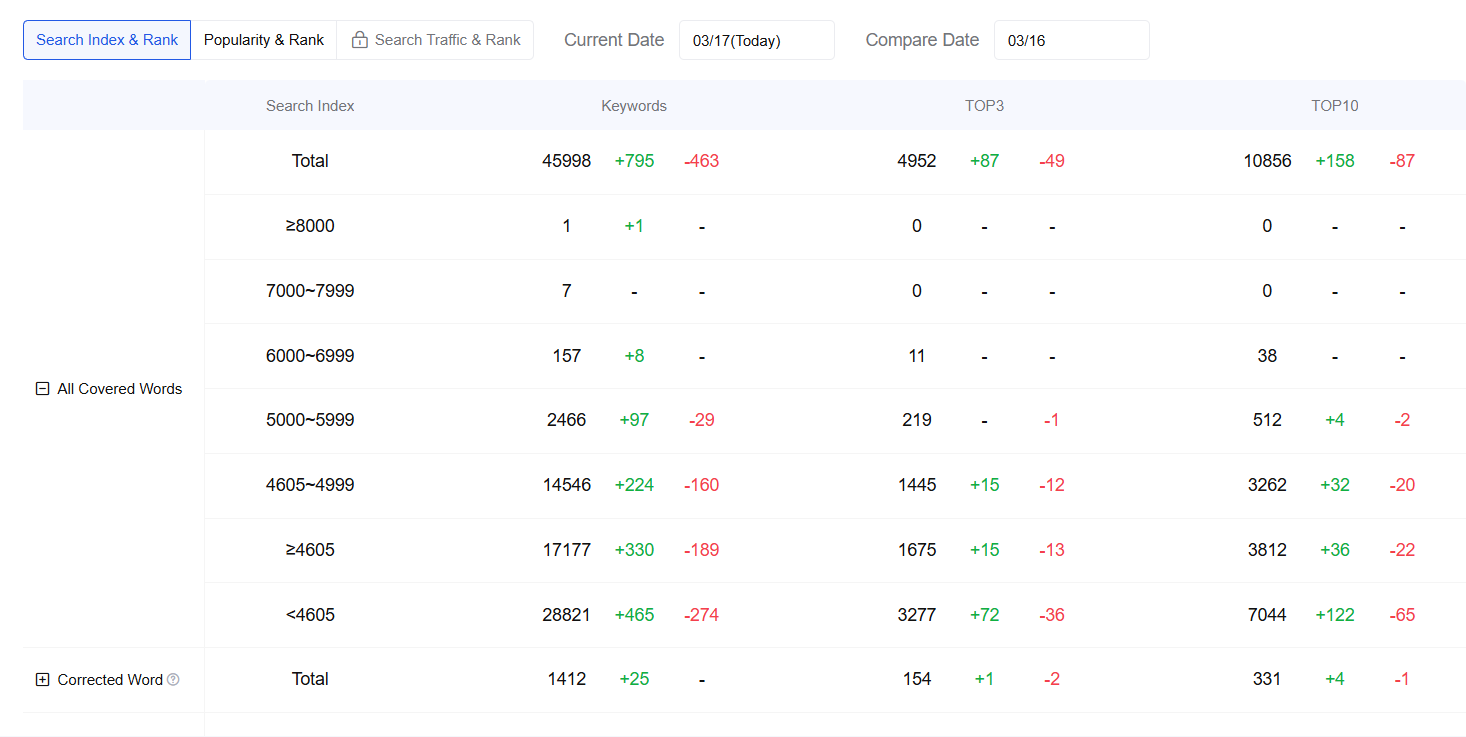
Source:UPUP
-
Fluctuation Word Analysis: Monitor keywords that have risen by 20 or more positions in a single day. These keywords often reflect significant adjustments in competitor strategies, providing valuable references for ASO strategy formulation.
-
Traffic Migration Prediction: Analyze changes in competitor natural traffic source words through data platforms, predicting traffic migration directions to provide forward-looking guidance for optimizing your app.
VII. Deep Optimization of Screenshot Metadata
Apple and Google's crawlers parse screenshot file EXIF metadata, with file name weight accounting for about 12%. Therefore, optimizing screenshot file names is crucial.
Standardized Naming System
-
Structure Template: Use "[Core Function][Usage Scenario][Platform Identifier]" structures. For example, "document_translation_business_meeting_ios.jpg," clearly indicating the core function, usage scenario, and applicable platform.
-
Technical Specifications
-
File names use lowercase letters and underscores for easy recognition and reading.
-
Include 2-3 core keywords in file names to increase matching with search keywords.
-
Strictly control character count to not exceed 30, preventing file name truncation and affecting metadata transmission.
-
VIII. SEO Transformation of Update Logs
Apple Review Guidelines
Each version update should clearly reflect functional improvements in the logs. Suggest using a "verb + quantifiable metric" structure. For example, change "Optimize user experience" to "Increase speech recognition accuracy to 98.7%," making updates more specific and measurable.
Keyword Embedding Techniques
Naturally integrate 1-2 core keywords into updated descriptions. For example, "Add offline translation mode, supporting real-time document translation in network-free environments," highlighting key features while improving keyword search rankings.
IX. Technical Optimization of Loading Speed
Statista reports that if an app's loading speed exceeds 3 seconds, user loss rates can increase by 53%. Google research shows that reducing LCP (Largest Contentful Paint) by 100 milliseconds increases network conversion rates by 1.3%. Thus, optimizing loading speed is crucial for app retention and conversion.
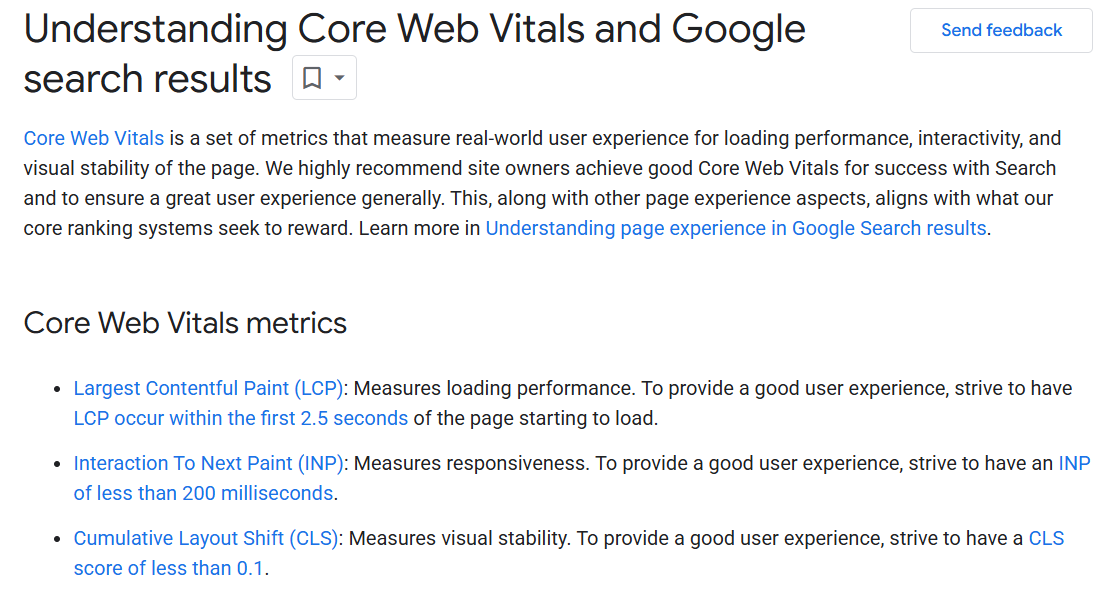
Source:Google
Three-Level Optimization System
-
Resource Compression Layer: Convert images to WebP format, reducing image size by 26-34%. Enable Brotli compression to increase text resource compression by 20%, effectively reducing data transmission and speeding up loading.
-
Code Simplification Layer: Use PurgeCSS to remove unused CSS rules and Tree Shaking to eliminate redundant JavaScript code, simplifying code volume and improving execution efficiency.
-
Loading Strategy Layer: Implement resource preloading, loading critical resources into memory in advance. Prioritize key rendering path resources to ensure important content loads first, enhancing user experience.
X. Differentiated Deployment of Cross-Platform Strategies
Algorithmic Weight Distribution
-
App Store: Title keyword weight accounts for 40%, keyword field for 30%, and subtitle for 15%. Thus, focus on optimizing titles and keyword fields on the App Store.
-
Google Play: Title weight reaches 50%, description's first 200 characters account for 30%, and user review content for 10%. On Google Play, focus more on title and description optimization.
Visual Element Strategy
On Apple platforms, prioritize optimizing the first three screenshots, as users decide whether to continue viewing within an average of 2.7 seconds. On Google Play, focus on 15-second preview videos, as users who watch them have a 63% higher conversion rate than those who don't.
Conclusion
ASO is about the accumulation of details. Suggest developers create an "ASO Detail Checklist" and perform monthly specialized optimizations. By continuously iterating on these overlooked details, your app can increase keyword coverage by 50% and natural downloads by 40% within three months. Take action now, starting with the first detail!
Click "the button" above to experience AppFast's app promotion services driving your app's development.
Navigation
10 Often Overlooked Details That Can Significantly Improve ASO Effectiveness
I. Constructing a Keyword Variant Matrix: Mining Long-Tail Traffic
II. Platform-Specific Keyword Layout
III. Technical Optimization of Video Localization
IV. Peak Design for Review Trigger Mechanisms
V. Algorithmic Weight Analysis of Punctuation
VI. Dynamic Tracking of Competitor Keywords
VII. Deep Optimization of Screenshot Metadata
VIII. SEO Transformation of Update Logs
IX. Technical Optimization of Loading Speed
X. Differentiated Deployment of Cross-Platform Strategies
Conclusion
Free consultation with ASO specialists
Doing ASO for the first time or have no idea how to carry out targeted optimization of your app?
We offer one-on-one customized services provided by app marketing specialists
Related recommendations
Copyright © 2018 - 2021 AppFast Company, LLC. All Rights Reserved. The AppFast word mark is a
registered trademark of AppFast Company, LLC in the US and other countries.

